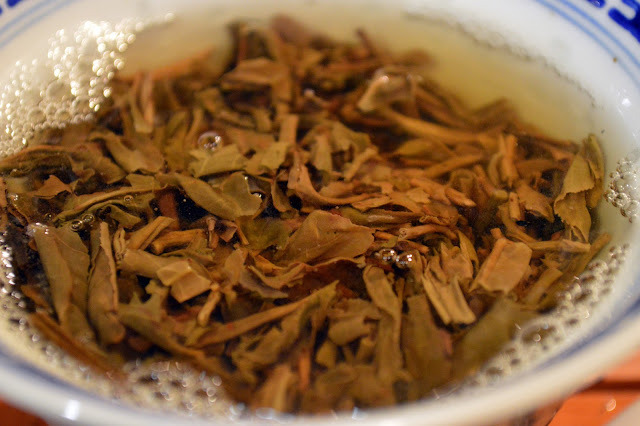This is a guest post from Lydia, a tea buyer and expert who I've known and worked with for a number of years now. She is always frank, straightforward, and honest with her thoughts on tea and the tea industry. She had the honor to serve as one of the judges during the 2016 North American Tea Competition, and has been gracious enough to share some of her thoughts here. She can be contacted via email here.
Hello and good afternoon,
The North American Tea Competition is an opportunity for companies to showcase their prize-worthy teas, and in some instances, winning entries call attention to little known teas. On February 25-26th, various blended/flavored teas, autumnal teas, and single- serve teas totaled over 200 teas for evaluation.
Speaking as a (very) interested party and from the perspective of a judge, the tastings provide a rare opportunity to enlarge visual/palate memory, to mull over category definitions and their boundaries, to hone cupping skills and the ability to make distinctions. Still, there is an ever-present sense of having to assess independently and being aware that numbers should probably not veer too far from what other judges determine. That said, it is a true luxury to have a support team watch water temperatures and steeping times, and weighing out the loose teas.
Entrants of course do not see other teas in their category but do receive comments even if their teas do not place. They therefore do not see the context and most importantly, the comparative stage on which the competition plays out. It is this setting that makes me happy to serve, with meals and a bed as my only recompense.
Here briefly are some lessons gleaned from the two-day session, and while none is a new insight, they nevertheless serve as useful reminders:
- Knowing benchmark teas: this cannot be over emphasized. I was not alone in stating that some were weak because flavor was lacking or the distinctive and defining character of a category was missing (which, for example, we found to be true of the Yunnan Black group). In some instances, careful tasting prior to sending off a tea with hopes of recognition might have alerted an entrant to possible taint or defective manufacture, resulting in low scores.
- Balance in blends and in flavored teas: because the tasting was blind – and any identifying tags on single-serve teas had been removed – we approached the teas without any preconception of flavors we expect to find. A label on a box announcing raspberry may predispose your palate to detect this feature. We found many in which a featured flavor was hard to discern, while on the opposite end, the flavor was so strong as to become a one-note beverage, lacking evidence that tea was a carrier. Finding the correct balance is a challenge, especially with green and white teas since they are mild to begin with. One adage that came to mind: Just because you can does not mean you should. Botanicals and flavors are meant to enhance the teas to which they are added, not overpower them. (One useful example to consider would be jasmine scented Silver Needles White - - a delicate scent [not essence/oil] combined with a mild White tea.)
- Trends: the high number of of submissions in the Flavored Black and Flavored Green categories is a useful mirror reflecting market demand, so no surprises here. The fact that there were six entries in the Jasmine Pearl group is a good sign for premium teas. In the Oolong groups, despite a long craft tradition and what I consider to be complex and deep flavors, the greener style – teas that are floral and friendly - continues to show greater appeal.
- Highest scoring teas: I don’t have the full stats yet but my impression is that Oolongs will show the highest numbers. Teas must earn a minimum threshold to place third, but in terms of absolute points, I think Oolongs garnered the top marks honor.
- What’s happened to Chai? We’ve noticed this trend for a couple of years now: the tea has become thinner in body even as more ingredients are added to this classic (defined here as made with Black tea). Brewed with water first and then cupped with milk, many of the teas were insipid rather than hearty, even though after viewing the colors, it was decided to add only 1 tablespoon of (whole) milk.
- How to convey a message to consumers: broken does not = bad. Whole leaf teas, loose or bagged, have rightly received much attention of late, and perhaps this has had the unintended consequence of consumers dismissing cut or broken leaves without having tasted good representatives of those teas. Black teas from Sri Lanka, such as BOPs or BP1s, give a satisfying, full-bodied cup that is a different, not necessarily inferior, experience than that from an OP.
The next NATC will be in summer when spring teas are evaluated, and as we are now in March, my natural impatience runs stronger waiting for the new teas. Air freight rates are increasing (I don’t remember them ever going the other way) but some teas are worth the effort.



























































